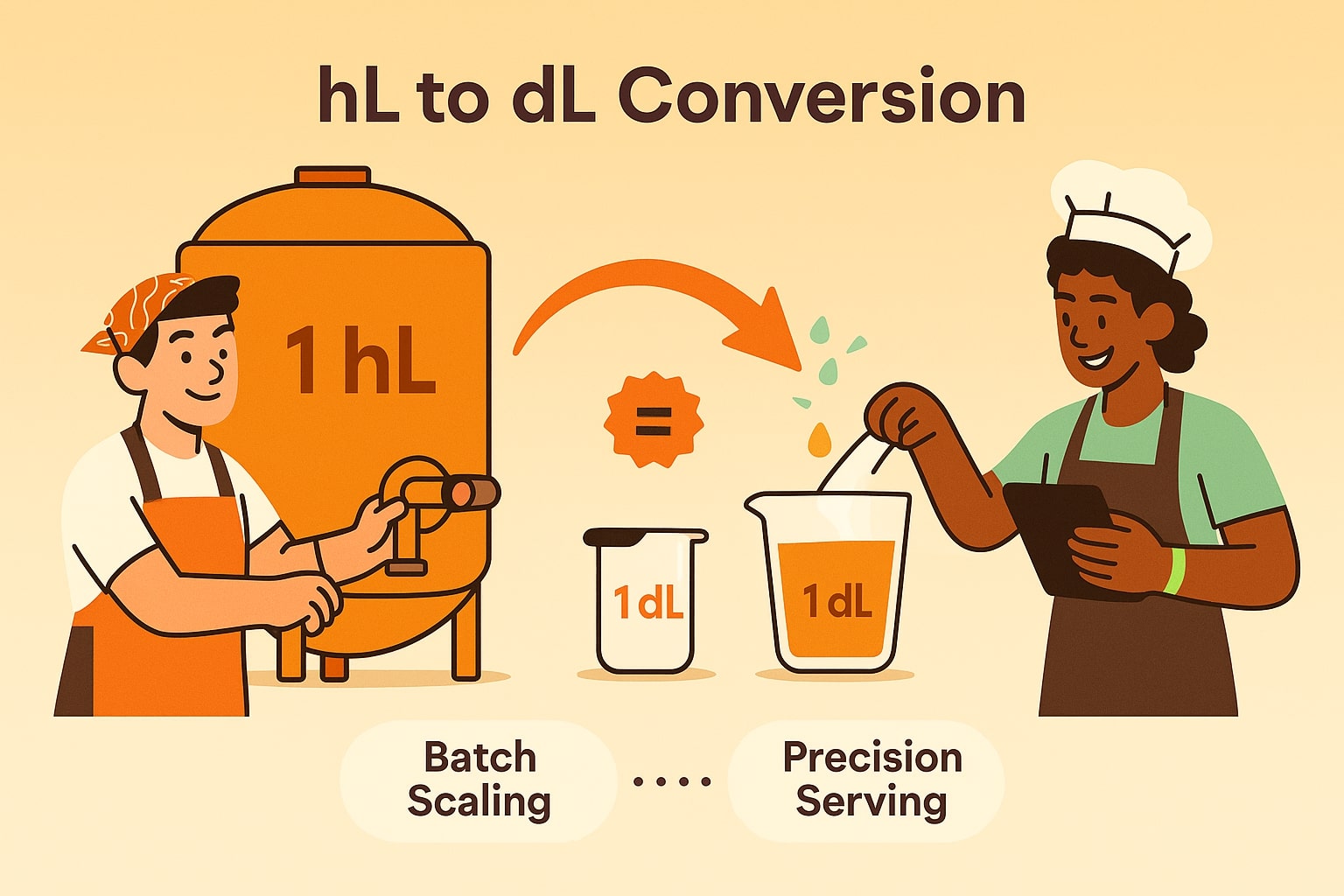Hectoliter to Deciliter – How to convert hL to dL
Need to convert hectoliter to deciliter for a recipe, beverage production, or industrial task? These two metric units are far apart in scale, but because they’re both part of the same system, the math is easy. Whether you’re a brewer scaling batches or a chef working with precise liquid volumes, Jetcalculator makes this conversion quick and painless. Below, we’ll break down the formula, share some surprising facts, and explain how these units show up in the real world.

What is a hectoliter (hL)?
A hectoliter (hL) is a large metric unit for measuring liquids, equal to 100 liters. It’s widely used in brewing, winemaking, and agriculture, where products like beer, juice, or milk are stored and sold in bulk.
In many European countries, breweries report their production in hectoliters, since it provides a convenient scale for large quantities without leaving the metric system.
What is a deciliter (dL)?
A deciliter (dL) is a smaller unit, equal to 1/10 of a liter (0.1 L). It’s common in cooking, nutrition labels, and bartending, where it helps measure moderate quantities with accuracy.
One deciliter equals 100 milliliters (mL), making it a handy middle ground between milliliters and liters for everyday measurements.
How to convert hectoliter to deciliter
The relationship is straightforward:
1 hectoliter = 1,000 deciliters (1 hL = 1,000 dL)
To convert:
Deciliters (dL) = Hectoliters (hL) × 1,000
Example: If a winery fills 24 hL of wine into bottles:
24 × 1,000 = 24,000 dL
Want to skip manual math? Try our Volume Converter or explore other Conversion tools for instant results.
Did you know?
-
The average beer barrel in Europe contains about 150 liters, or 1.5 hL, which equals 1,500 dL – enough for hundreds of glasses.
-
A 1-liter bottle of soda equals 10 deciliters, so one hectoliter could fill 100 soda bottles.
-
The largest wine vat ever used, built in 2014 in Switzerland, had a capacity of 120,000 liters, which equals 1,200 hL or 1.2 million dL.
-
Many Swedish and Finnish cookbooks list liquid ingredients in deciliters, making recipes easy to scale for families or restaurants.
How Two Units Kept Europe’s Breweries Organized
In the late 1800s, as brewing and winemaking scaled up across Europe, traditional local units like barrels and pints caused confusion in trade. According to historical accounts in The Oxford Companion to Wine, breweries adopted hectoliters for production tracking because it scaled efficiently, while deciliters became common in retail and household use.
By using these two linked metric units, producers could manage massive batches while still marketing their products in sizes consumers understood – creating a seamless bridge from brewery to bottle.

Wrapping It Up
Converting hectoliter to deciliter is as simple as multiplying by 1,000. Whether you’re working in food, beverage, or industrial fields, this conversion keeps your measurements accurate and scalable.
For fast and precise results, use our Volume Converter or explore other Conversion tools to simplify your work.

